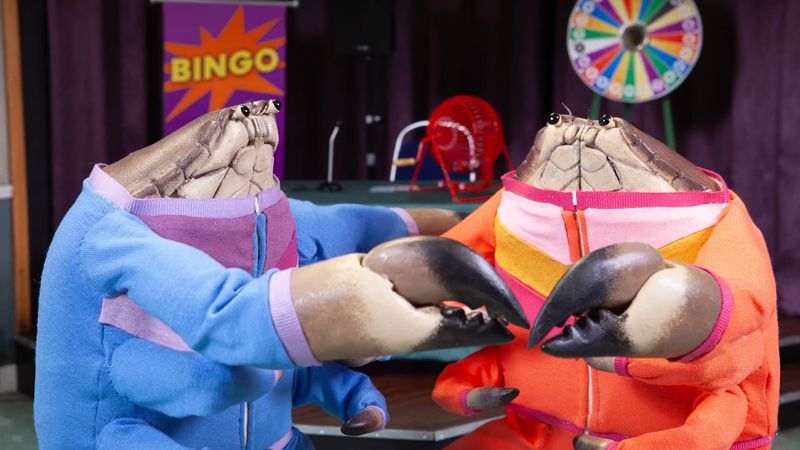JWT Continues Canon’s Come & See Campaign
Surfing in Munich’s Eisbach River is the perfect way to show off Canon’s camera functions.
It’s no secret that professional photographers have long doubted the capabilities of smartphones compared with the depth and quality available on actual cameras. But for novice or amateur photographers, smartphones offer a practical and easy solution to documenting daily life.
In a bid to tempt smartphone users to test out Canon’s cameras, JWT has launched a new campaign in its Come and See series that allows passionate photographers to experience the perks of shooting with Canon through the comfort of their mobile handsets.
Click here to be transported to the heart of Munich’s surfing community – which revolves around the Eisbach River and its famed man-made, surf-able wave.
By following the lives of three local surfers – Alex, Karina and Tao (introduced in an video featured on the platform, below) - the campaign allows online users to try out various Canon cameras and play around with each of their functions.
Users can take photos of the surfers as they surf the wave and although they will be taking them on their handsets, the photos will be high res and will reflect the cameras’ ability to capture good quality photos in high action and low light settings.
The online platform also features various short clips to help amateur photographers progress by offering them tips on how to use their camera as well as compare images from smartphones and Canon’s cameras.
shots caught up with JWT, MediaMonks and Canon's ambassador to find out what it took to create such a digitally-focussed campaign.
Barry Christie JWT, Creative Director

What was the brief that Canon approached you with?
To reach out to non-established photographers; people playing on their smartphones who don’t necessarily realise the benefit of a camera. But we wanted it to be accessible; to showcase something that anybody could access and shoot. In every city, there’s always something to explore and great stories to uncover. We wanted to tell these stories with a more interactive element, so viewers could relive the experience.
Why did you decide that Munich's Eisbach River was suitable for the campaign?
It’s a place that you can just stumble across and find when walking around the city. We wanted to combine real action with human passion and the Eisbach offered both.
Why did you decide on creating a digitally immersive campaign rather than a TVC like the earlier Come and See spots in the series?
The audience that we were trying to engage with use mobile as their first screen and we wanted to play in this space. We’re looking to target the smartphone generation that's probably not owned a camera before.
What was the casting process like?
We wanted people who could surf well and that had an interesting backstory.
What were the biggest challenges you experienced on the job?
How to cut and edit when working on an interactive experience; telling a linear story; how to shoot night surfing; and learning to control the crowd – as it was an open set so people were always wandering around.
Samo Vidic, Canon Brand Ambassador & Sports Action Photographer

What were the main differences with working as a photographer on this job?
The biggest difference was that I shot 14 frames per second. When I usually shoot, I normally do eight frames per second which still means you have a lot of redundant images. But here, because the action was so quick, you need to document it faster. We also had very tight timeframes in which to capture it all in; there was 30-45 mins of really good light between 7-8pm where we did some of the behind the scenes shooting, otherwise we had a permit until 1am over three days to do it.
Tom Rijpert, Director, MediaMonks

What was the brief you received from Canon?
To show some of the special places in the city that are waiting to be discovered. Previously, the TVCs in the series were shown through flat film but now JWT wanted to make them more interesting by placing the viewer in the middle of the action.
What was the casting process like?
The surf community is very close knit in Munich – so it was really important to get some of the most popular people involved. They needed to be open to us, so that as a user you feel like you were taken on a normal day with them, not looking at it from a distance.
What appealed to you about the project?
The use of new techniques, which I find really interesting when they’re used right. With each new project, you learn more. Its not like you're looking at something, you're in the middle. It’s a different way of working for everyone. When filming, you want people to go out of frame so that the viewer will follow the subject and make the most of the interactive elements on offer.
What is the benefit of interactive campaigns for you as a director and for the viewer?
It doesn’t work for every project, but I think here it does because its about action and sharing an experience. It requires participation and brings the viewer closer.
Connections
powered by
- Agency JWT London
- Production MediaMonks UK
- Sound Design MediaMonks UK
- Director Tom Rijpert
- Director of Photography Serge Teulon
- Executive Creative Director Russell Ramsey
- Producer Toby Clifton
Unlock this information and more with a Source membership.
)






 Membership
Membership


